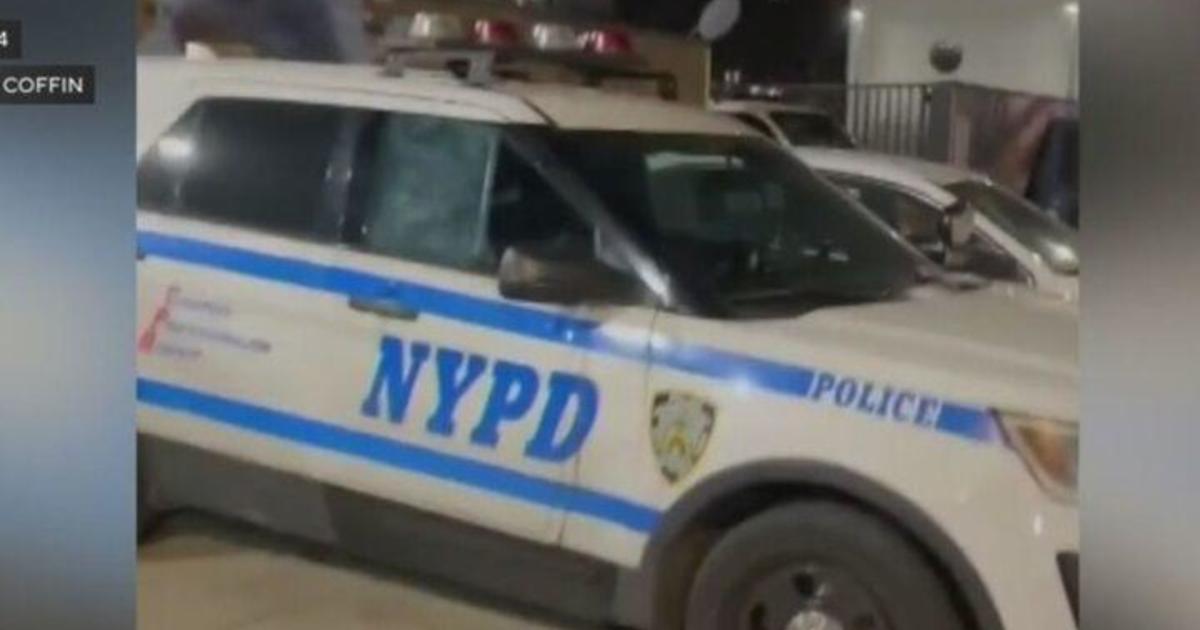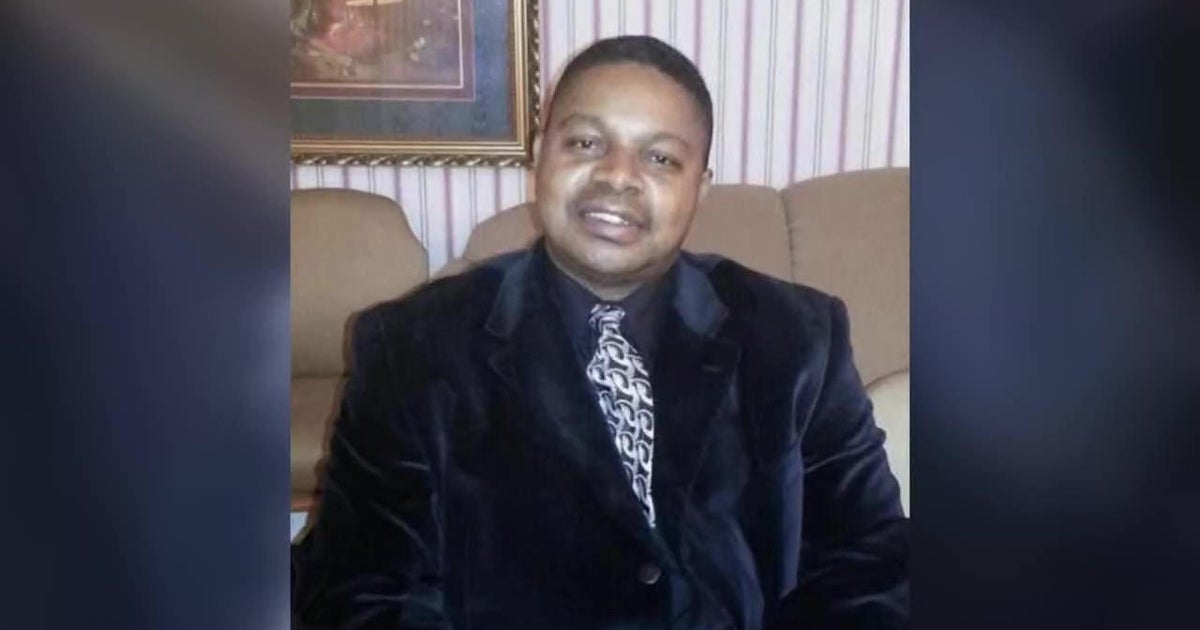'There's Nobody Else To Blame': Gov. Andrew Cuomo Demands MTA Fix Homeless Problem On Subways
NEW YORK (CBSNewYork) -- Gov. Andrew Cuomo has ordered the Metropolitan Transportation Authority to do something about homeless individuals on subways and in stations.
Cuomo says recent incidents, like the time a homeless man threatened passengers with a hammer, are unacceptable, and CBS2 political reporter Marcia Kramer says he's now giving the MTA an ultimatum -- fix it or else.
"Address the homeless problem. It's worse than ever. It's inhumane. It's unnecessary. It's delaying trains more than it ever has before," Cuomo said.
RELATED STORY: NYPD Begins New 'Summons Diversion' Program In The Hope Of Getting Homeless Off The Subways
The governor ordered the MTA, which is in the midst of a massive management reorganization, to include a plan to fix the homeless problem, telling CBS2 the blame game has to stop and the MTA has to step up.
Kramer: "How do you stop the finger-pointing? The NYPD points the fingers at the MTA, the MTA points the fingers at the NYPD."
Cuomo: "This is how you stop it -- the MTA can do it on its own ... If they need more police, if they need more social service providers, hire them ... It's under the MTA's control. There's nobody else to blame. Look in the mirror ... There are no excuses."
Incidents involving the homeless have more than tripled in the last decade, many causing serious delays, rising from 254 in 2008 to 856 last year. In 659 of those cases, trains were delayed, nearly twice a day.
The governor then upped the ante, saying that if the MTA board and MTA management don't fix the homeless problem, "they will be held accountable."
"The buck stops with the board of directors first. If they don't make progress, then they're going to be held accountable. After the board, it's the senior management," Cuomo said.
Cuomo issued the following letter to the MTA board of directors Friday:
To: MTA Board of Directors
The Reorganization Plan due at the end of this month provides the opportunity for another profound reform of the MTA.
As we know, as a starting point, the plan must institutionalize the lessons learned from the Subway Action Plan and implement the new management systems necessary to continue the recent progress. The extraordinary interventions of the Subway Action Plan - financial and operational - are unsustainable and the reorganization must now incorporate those procedures, methods and systems. The plan obviously must address the "time and attendance" problem as one of the failed management systems.
The Reorganization Plan will become a component of the overall transformation of the MTA. Legally mandated fundamental reforms were passed in this year's legislative session. Mandatory debarment of bad contractors, mandatory use of design-build construction, congestion pricing, limited fare increases, a forensic audit and a new Capital Plan Review Board are major transformational reforms.
These measures are combined with the recent Fare Evasion task force announcement, providing 500 additional uniformed officers to protect workers and address the increasing fare revenue loss. The MTA will also shortly commence a Train Speed and Safety Review effort, which will address the union's long standing and understandable practice of driving trains slower than posted speed limits due to improperly calibrated speed signals. The trains throughout the system will move faster and commutes will be shorter. New technology for train navigation systems is being explored and a Cornell Technion Conference for new ideas and vendors is being set up.
There is one additional major issue that needs to be addressed and I believe should be included in the Reorganization Plan. Namely, the increasing problem of homelessness on the subways.
While crime may reportedly be down on the subways, the number of homeless people is up, and it is directly impacting service to riders.
In 2018, there were 1,771 homeless people living in the subway — that number surged to 2,178 in 2019, an increase of 23%. According to the MTA's own statistics, trains were delayed 659 times in 2018 by homeless people who were walking on tracks, and engaging in disruptive and often dangerous behavior including blocking train doors—a staggering 54% increase from the 428 homeless related delays in 2014. And that number is getting worse: in the first three months of this year, the MTA reports that there have already been 313 homeless related train delays. Over the last decade, the number of incidents more than tripled, from 254 in 2008 to 856 last year.
New Yorkers are unfortunately accustomed to having homeless issues on the trains and in the terminals during the winter months, but this has now become a year-round phenomenon. Homeless people often pose a danger to themselves and others. This is another example of a problem long discussed but short on constructive progress. The discussion has had the NYPD point to the MTA and the MTA point to the NYPD. Let's end that exercise and point forward.
There is no "reinvention of the wheel" necessary in this case. We are all familiar with the issues and challenges of helping the homeless. Our experience in New York City goes back to the Ed Koch administration. Society serves no one by allowing homeless individuals who need help to inhabit the subways. Let's actually focus on helping the homeless, rather than political posturing. This is not an issue of helping the homeless or the subway riders; that is a false choice. We must serve both.
I began my career working with the homeless in my 20s. I was in charge of Federal homeless policy during the Clinton administration. As HUD Secretary and as Governor of New York, I have provided more funding to help the homeless than any of my predecessors. The MTA currently spends millions in funding social service providers to help the homeless in this system. What is that money going toward? What are they doing? What are "we" doing? The simple and plain truth is that too many mentally ill people are housed in our jails and left to our streets. It is a great undeniable and societal failure on all levels. It is not progressive, practical, humane, justifiable or tolerable. The MTA must develop a comprehensive outreach plan that coordinates MTA personnel, social service providers and shelter and supportive housing providers to help the homeless out of the system and into safe, supportive environments. If the MTA needs more police or social service providers, now is the time to make that adjustment. Hire them and include it in the Reorganization Plan.
As Governor, I believe history will judge us by what we actually accomplished or failed to accomplish. Our focus must be on achieving results, rather than political rhetoric or bureaucratic process. I also believe we must seize the moment for change when the moment presents itself. In this state, we passed a series of national precedents by seizing the moment for change.
After 50 years of different degrees of dysfunction, the MTA, which was flawed from inception, can now reshape itself and the service it provides to be the first-class organization New Yorkers deserve.
Change is possible. Two years ago the system faced a crisis, and with the Subway Action Plan we aggressively implemented a centralized emergency management system that showed that, despite the bureaucracies' resistance to change, with a new way of doing business, real progress could be achieved. Our success in completing the Second Avenue Subway extension to 96th street, and doing it on time, when the MTA bureaucracy had given up, showed the same possibility. Recently, the new plan on the L train tunnel construction, while disturbing the MTA bureaucracy, also showed a better way forward and greatly helped riders.
There are no small solutions to big problems and the MTA has nothing but big problems. However, we have also shown we can make big reforms. The Port Authority is now finally building new LaGuardia and JFK airports. The Thruway Authority built a new Tappan Zee Bridge. The State Parks agency just rebuilt Jones Beach. Empire State Development is completing the 30-year delayed Moynihan train station. The MTA can be reformed as well.
The Reorganization Plan legally due by the end of July provides the opportunity to not only address the administrative changes but also the protracted issue of homelessness in the MTA, and you should demand that it does and that the plan be compassionate, pragmatic and effective.
I urge you to seize this moment to remake the MTA. This opportunity may not come again. Taken together, the initiatives passed in law and already announced will reshape the MTA.
With a new path on public safety, contracting, tolling, construction, train speed, capital planning, financial integrity and a new organizational model and plan to help the homeless, the MTA will provide a fundamentally better service.
While bureaucratic change always brings disruption and controversy, for the MTA, the unwillingness or inability to change continues the status quo and ensures failure.
The moment is upon us and I am excited about the possibility.
Sincerely,
Governor Andrew M. Cuomo
Patrick Foye, MTA chairman, told CBS2 he's already on it.
"The governor is right. The governor is spot on. We're not doing the homeless any favor by allowing them to sleep in the subway," he said.
Foye says officials have already met with the NYPD to come up with a plan.
"I know we can be more effective than the MTA has been in the past," he said.
The homeless plan will be part of the MTA reorganization plan expected to be adopted by the end of the month. It will include combining duplicative back office departments to save hundreds of millions of dollars, a move that could result in several thousand people losing their jobs.
"It's about better delivery of customer service the subways, the buses, the commuter rails," Foye said.
The Coalition for the Homeless is taking issue with the governor, saying the way to fix the problem is with more housing and services.
Jacquelyn Simone, policy analyst at Coalition for the Homeless, released the following statement:
"As Gov. Cuomo wrote: Let's actually focus on helping the homeless. Offering all homeless people a way out of homelessness and into safe, affordable and supportive housing is the solution. Every level of government, including New York State, can and should redouble their investments in these permanent solutions. However Gov. Cuomo's reference to increased policing of homeless people in the subways is misplaced: We have always advised State and City leaders that the answer is most definitely not more policing because summonses and harassing vulnerable people to make them move simply pushes them deeper into the shadows without helping them obtain the services and housing each one of them needs. If Gov. Cuomo wants to fix the problem, let him step up with more housing and services specifically targeted for homeless people, stop shifting the cost of shelters off to localities, and stop the prison-to-shelter pipeline from the State's correctional facilities."



